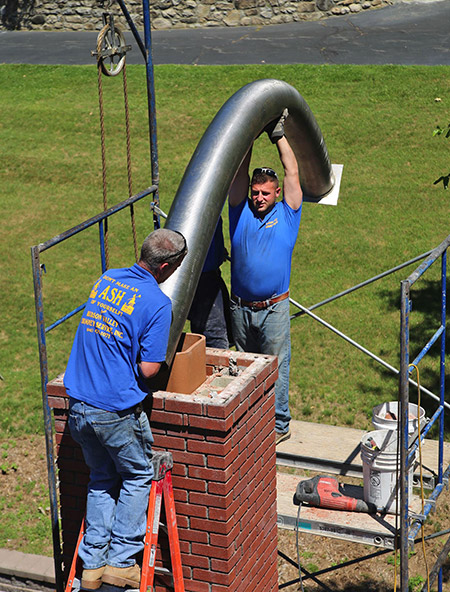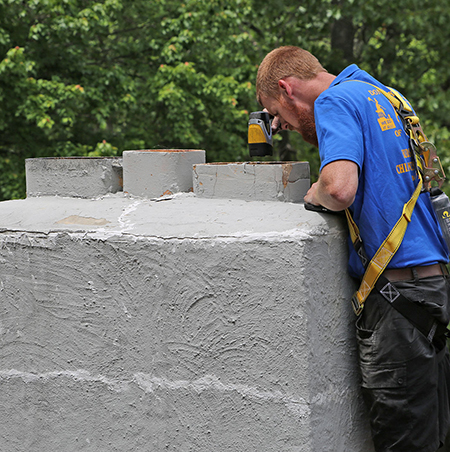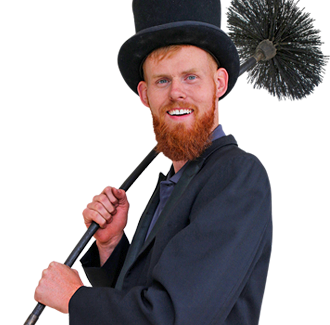Here’s the Real Skinny on Chimney Liners
 Homeowners sometimes raise an eyebrow when advised that a chimney liner needs replacement, and perhaps it’s because the chimney sweep industry is vulnerable to scammers. As an unregulated industry, the door is open for unscrupulous people to claim they are bona fide chimney sweeps and then make outrageous claims about the condition of a perfectly sound chimney. Their purpose is to charge exorbitant prices for bogus services. If you want the real skinny, here it is: A chimney liner must be free of defect because it serves two critical functions. First, the liner ensures that combustion byproducts exit through the chimney, not into the home. Second, the flue protects combustible parts of your home from the impact of extreme heat. If there is even a tiny crack in the lining, an extremely hazardous house fire could be ignited.
Homeowners sometimes raise an eyebrow when advised that a chimney liner needs replacement, and perhaps it’s because the chimney sweep industry is vulnerable to scammers. As an unregulated industry, the door is open for unscrupulous people to claim they are bona fide chimney sweeps and then make outrageous claims about the condition of a perfectly sound chimney. Their purpose is to charge exorbitant prices for bogus services. If you want the real skinny, here it is: A chimney liner must be free of defect because it serves two critical functions. First, the liner ensures that combustion byproducts exit through the chimney, not into the home. Second, the flue protects combustible parts of your home from the impact of extreme heat. If there is even a tiny crack in the lining, an extremely hazardous house fire could be ignited.
What Exactly is a Flue?
A flue is a duct in a chimney that accommodates the expulsion of smoke and combustion gases produced by a fuel-burning appliance. Older homes sometimes still have a chimney built the old-fashioned way. As a chimney was built, it was pargeted, which means the interior was covered with a smooth, thin coating of mortar. Such chimneys have long needed a fresh solution, due to normal wear and tear.
The more modern practice for a built-in flue liner is to add clay tiles. Clay liners are economical and durable, lasting between 25 and 50 years. The tiles are able to withstand corrosive byproducts and extreme heat, but the mortar between the joints as well as the tiles themselves eventually begin to fail. Replacing clay tiles is not feasible, unless money is no object, since partial teardown and rebuild of the chimney is required for clay tile liner replacement.
Metal Flue Liners
At Hudson Valley Chimney, we often recommend a metal flue liner. They are safe and durable. Metal liners are available in aluminum and stainless steel, and they can be used when a clay liner has deteriorated. Aluminum liners are only suitable for gas appliances. A stainless steel liner can be used with any fuel source. Heat insulation is provided with all steel liners, to prevent heat from being transferred outside the flue.
Cast-in-Place Liners
Another material impervious to the heat and acidity of combustion gases is cement. Cast-in-place liners are made with poured cement, and they can be used with all fuel types. An added benefit of a cast-in-place chimney liner is that it can improve an older chimney’s structural integrity.
 The Importance of Annual Chimney Inspections
The Importance of Annual Chimney Inspections
An annual chimney inspection is recommended by every leading fire safety organization, including the National Fire Protection Association (NFPA) and the Chimney Safety Institute of America (CSIA). Keeping watch on the condition of the flue isn’t possible with the naked eye. We have cameras specially designed to provide a top-to-bottom look at the condition of flue liners. This is a critical safety issue. It’s best to call a reputable chimney sweep company like the licensed, certified experts at Hudson Valley Chimney. This way, if you are told a chimney liner is needed, you can be confident the technician isn’t just blowing smoke.








